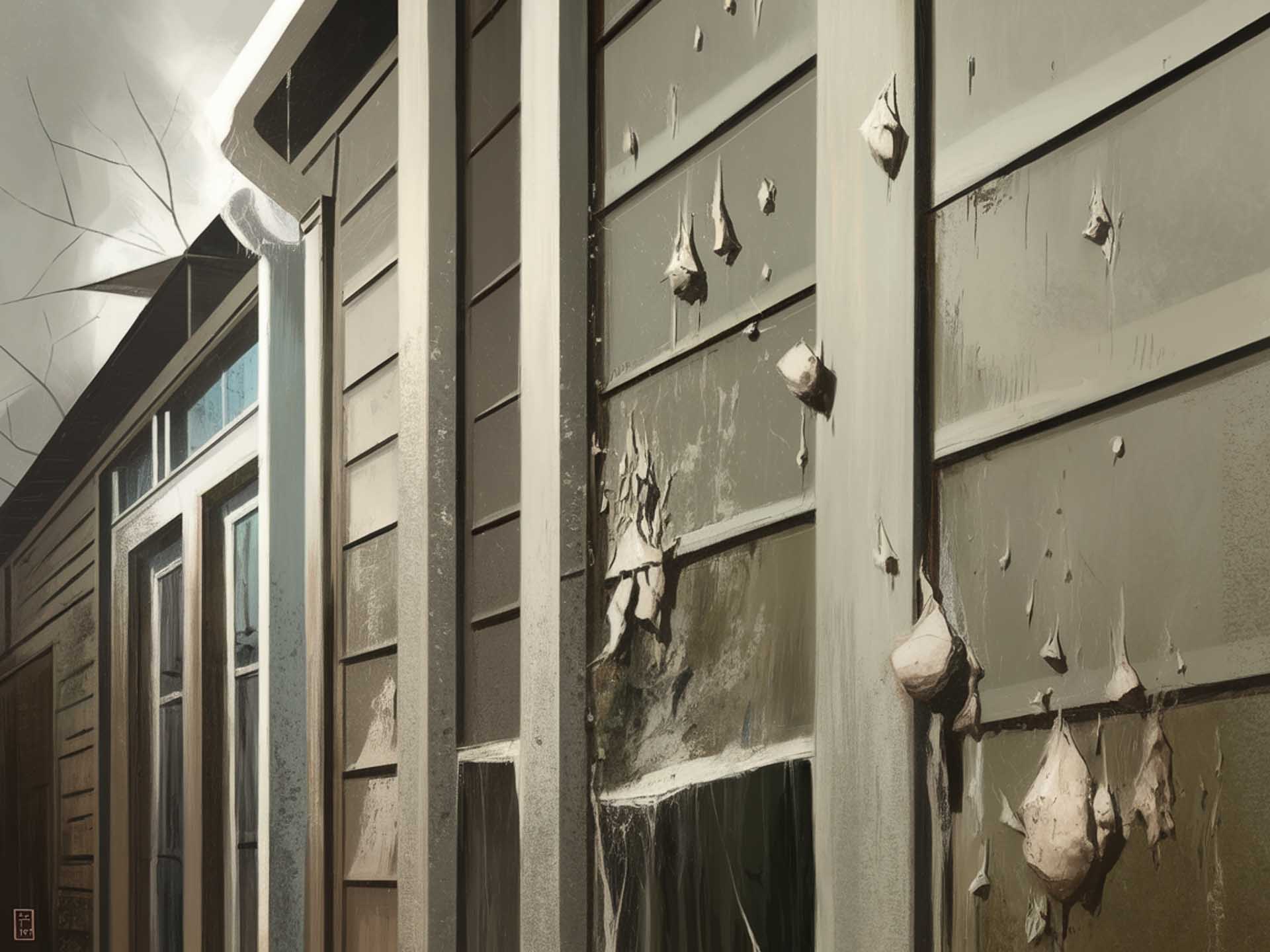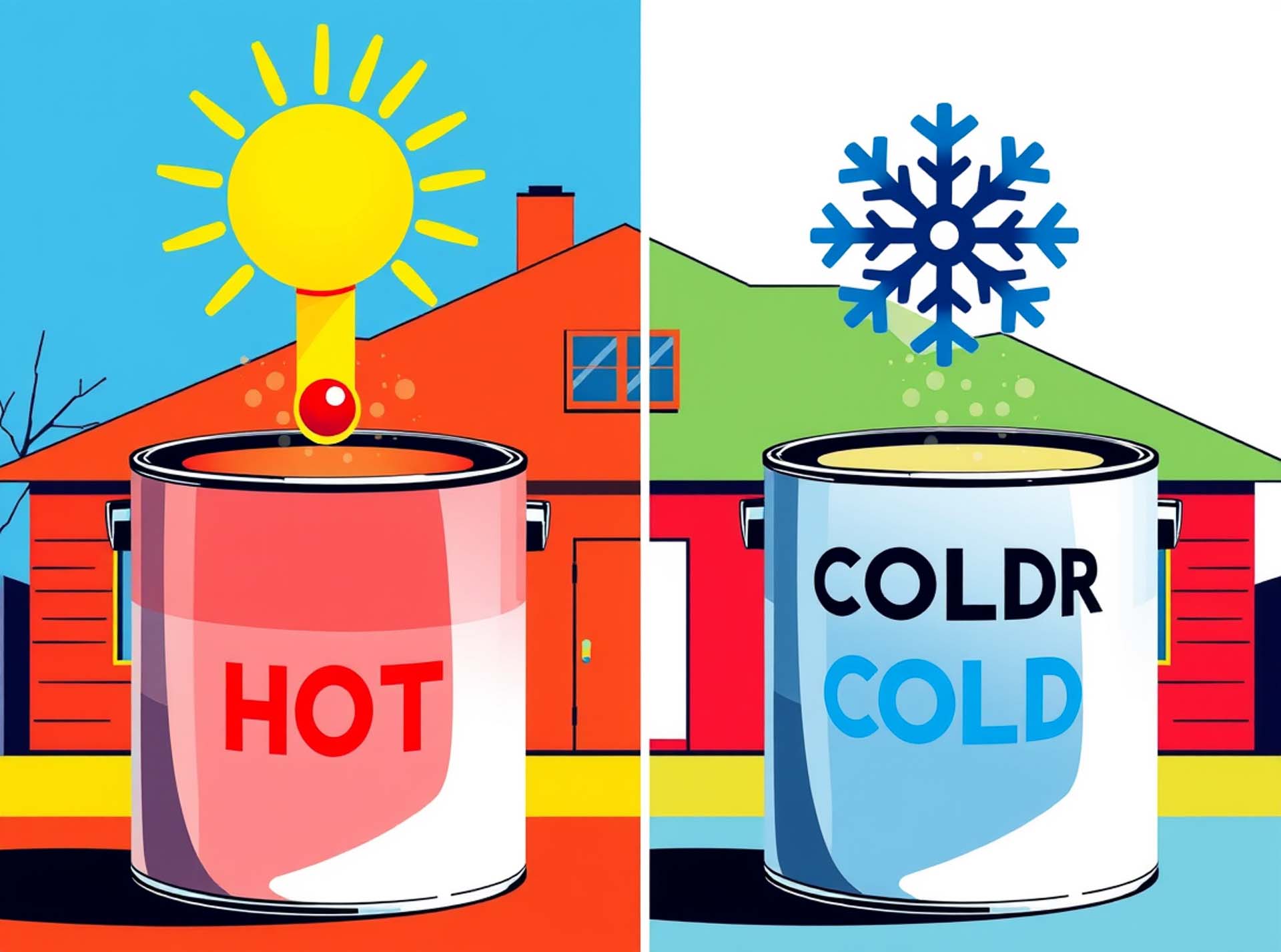Winter’s Wrath: Addressing Paint Moisture Issues to Safeguard Your Home
Introduction
As winter approaches, homeowners face unique challenges in maintaining their property’s exterior. One of the most significant concerns is addressing paint moisture issues in winter. The cold season brings increased precipitation, humidity, and temperature fluctuations that can wreak havoc on your home’s paint job. In this blog post, we’ll explore the causes of paint moisture problems during winter and provide practical solutions to protect your home’s exterior.
Understanding Paint Moisture Issues
Paint moisture issues occur when excess moisture penetrates the paint layer, leading to various forms of damage. In winter, these problems are exacerbated due to:
- Increased rainfall and snowfall
- Freeze-thaw cycles
- Condensation from temperature differences
- Poor ventilation in enclosed spaces
When moisture seeps into paint, it can cause:
- Peeling and flaking
- Blistering
- Mold and mildew growth
- Discoloration
- Reduced paint adhesion
Understanding these underlying causes is crucial for effective exterior painting and maintenance.
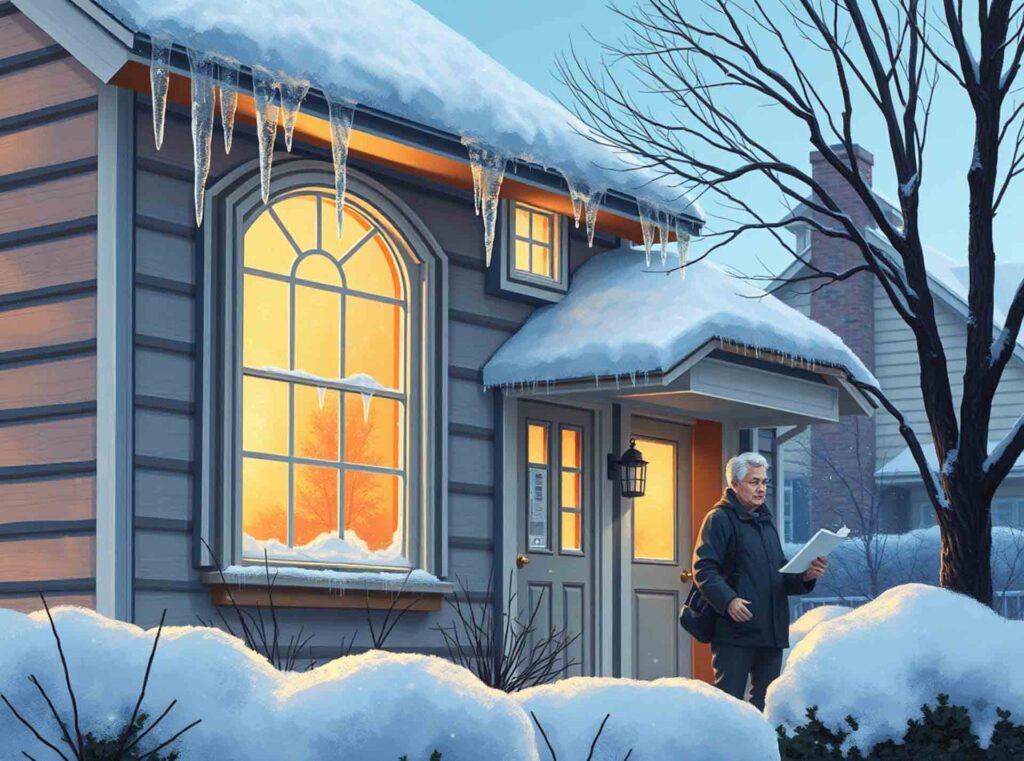
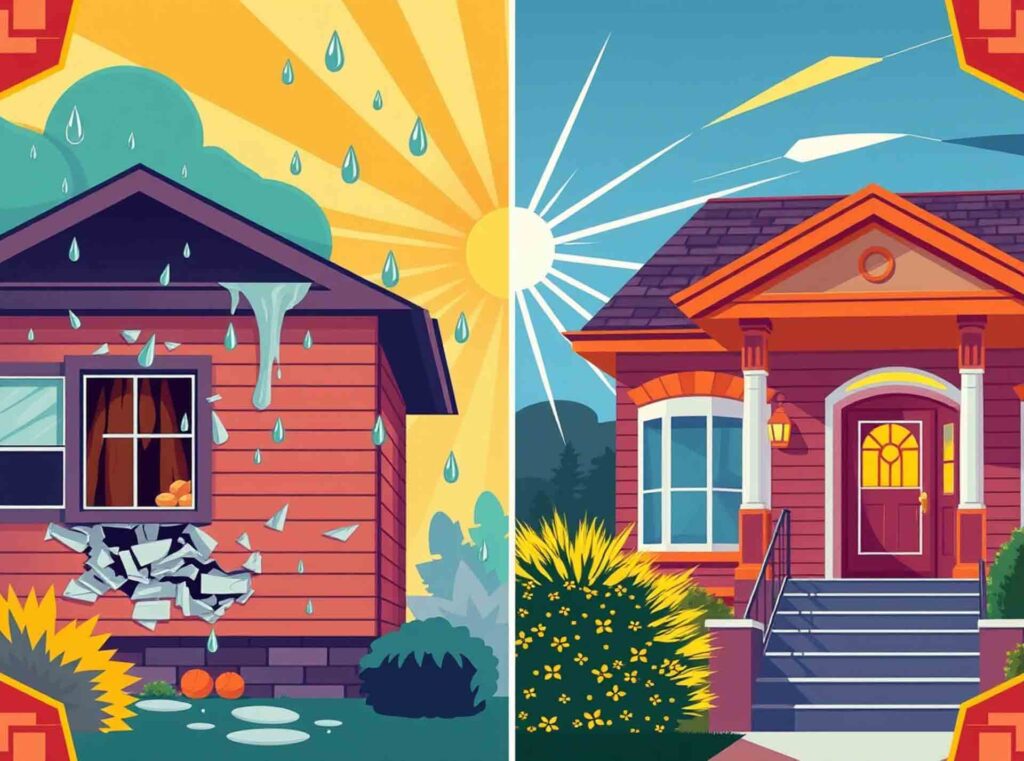
Common Winter Moisture Problems
During winter, several moisture-related issues can affect your home’s exterior paint:
- Ice Dams: These form when snow on the roof melts and refreezes at the edges, causing water to back up under shingles and potentially seep into walls.
- Condensation: When warm, moist air from inside the home meets cold exterior surfaces, condensation can form, leading to paint damage.
- Snow Accumulation: Snow piling up against exterior walls can melt slowly, allowing moisture to penetrate the paint layer.
- Gutter Issues: Clogged or damaged gutters can cause water to overflow and run down exterior walls, leading to paint damage.
- Frost Heave: This occurs when water in the soil freezes and expands, potentially causing cracks in the foundation that can lead to moisture issues.
Preventing Paint Moisture Issues
To address paint moisture issues in winter, prevention is key. Here are some effective strategies:
- Proper Insulation: Ensure your home is well-insulated to prevent heat loss and reduce the risk of condensation.
- Ventilation: Improve attic and crawl space ventilation to reduce moisture buildup.
- Gutter Maintenance: Regularly clean and maintain gutters to ensure proper water drainage.
- Exterior Caulking: Seal gaps and cracks around windows, doors, and other openings to prevent water infiltration.
- Quality Paint Selection: Choose high-quality, moisture-resistant exterior paints designed for your climate.
- Proper Paint Application: Ensure paint is applied correctly, following manufacturer guidelines for temperature and humidity levels.
- Regular Inspections: Conduct routine checks of your home’s exterior to catch and address issues early.
Addressing Existing Moisture Damage
If you’ve already noticed signs of moisture damage on your home’s exterior paint, take these steps:
- Identify and address the moisture source (e.g., leaky gutters, poor ventilation).
- Allow the affected area to dry completely.
- Remove loose or damaged paint by scraping and sanding.
- Apply a primer designed for moisture-prone areas.
- Repaint with a high-quality, moisture-resistant exterior paint.
Remember, addressing the root cause of moisture problems is crucial for long-term success in exterior maintenance.
Professional Help vs. DIY
While some exterior painting and maintenance tasks can be DIY projects, addressing paint moisture issues in winter often requires professional expertise. Consider hiring a professional if:
- The damage is extensive or affects large areas of your home
- You’re unsure about the source of moisture problems
- The issue involves structural components of your home
- You lack the necessary tools or experience for proper repairs
A professional painter or contractor can provide a thorough assessment and recommend the best course of action for your specific situation.
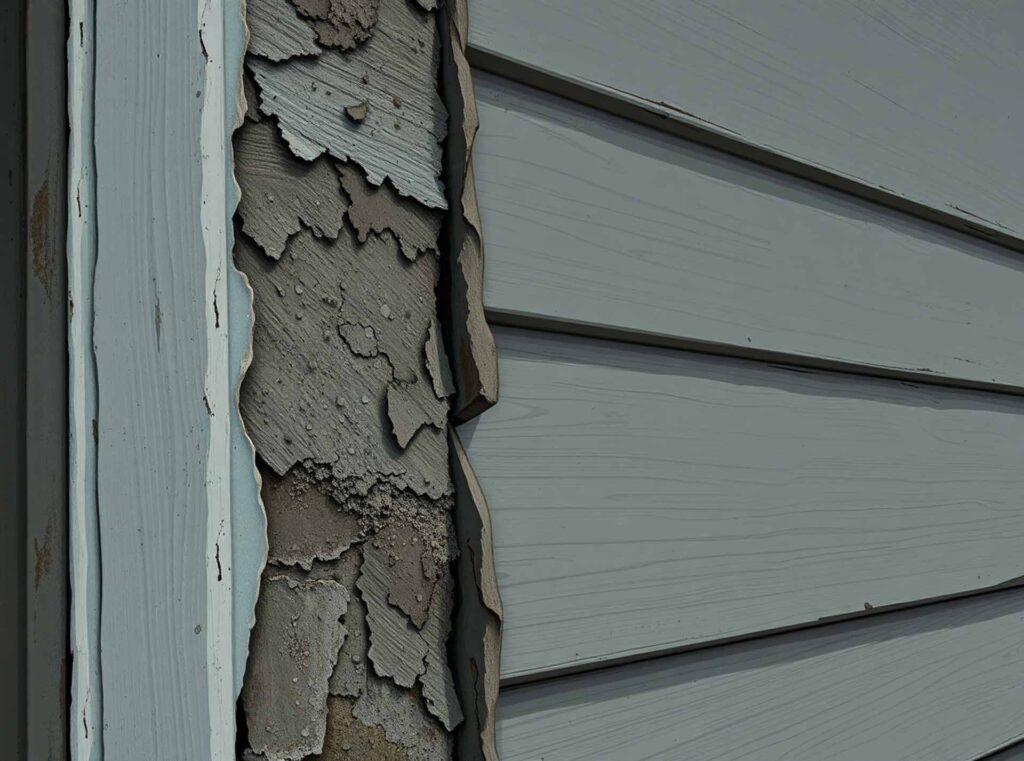
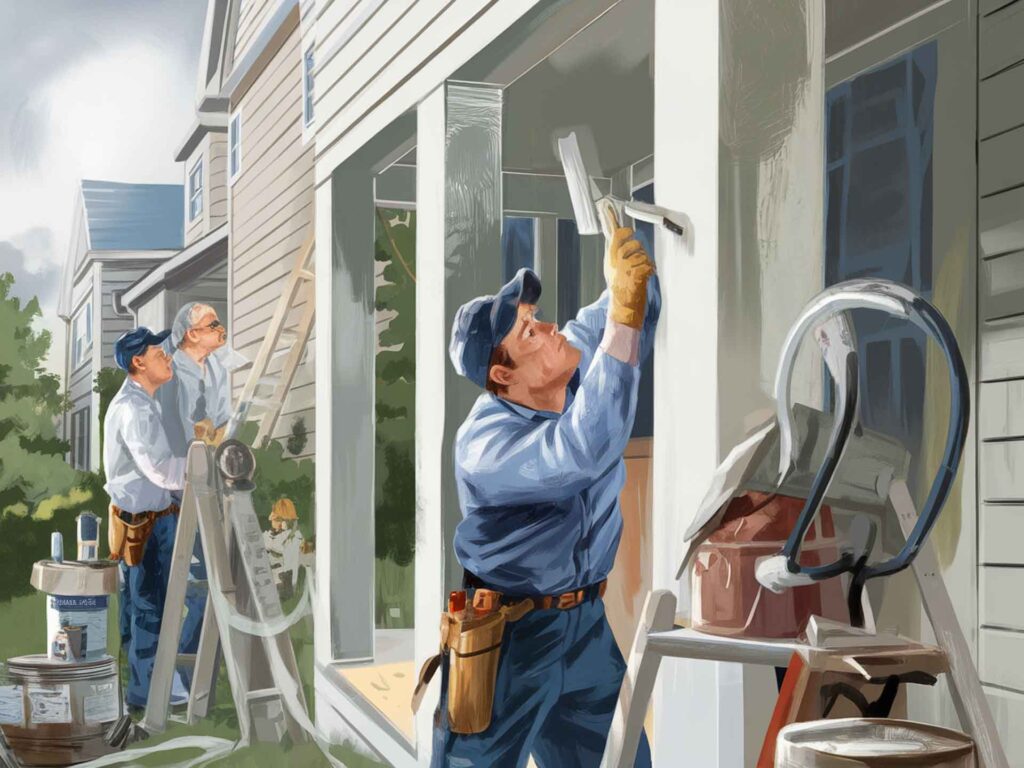
Long-term Exterior Maintenance
To prevent future paint moisture issues and maintain your home’s exterior, develop a long-term maintenance plan:
- Annual Inspections: Schedule yearly checks of your home’s exterior, preferably before winter.
- Regular Cleaning: Wash exterior surfaces to remove dirt and prevent mold growth.
- Prompt Repairs: Address any damages or issues as soon as they’re noticed.
- Repainting Schedule: Plan to repaint your home’s exterior every 5-10 years, depending on your climate and paint quality.
- Landscaping Considerations: Trim trees and shrubs away from your home to reduce moisture retention near exterior walls.
- Drainage Improvements: Ensure proper grading around your home to direct water away from the foundation.
By implementing these long-term strategies, you can significantly reduce the risk of paint moisture issues and extend the life of your home’s exterior paint job.
Conclusion
Addressing paint moisture issues in winter is crucial for maintaining your home’s exterior and preventing costly damages. By understanding the causes of moisture problems, implementing preventive measures, and addressing existing issues promptly, you can protect your home from winter’s harsh effects. Remember to conduct regular inspections, maintain proper ventilation and insulation, and choose high-quality, moisture-resistant paints for best results.
Don’t let winter weather compromise your home’s exterior. Take action now to address paint moisture issues and ensure your home stays beautiful and protected all year round. If you’re unsure about how to proceed, don’t hesitate to consult with a professional painter or contractor for expert advice tailored to your home’s specific needs.

